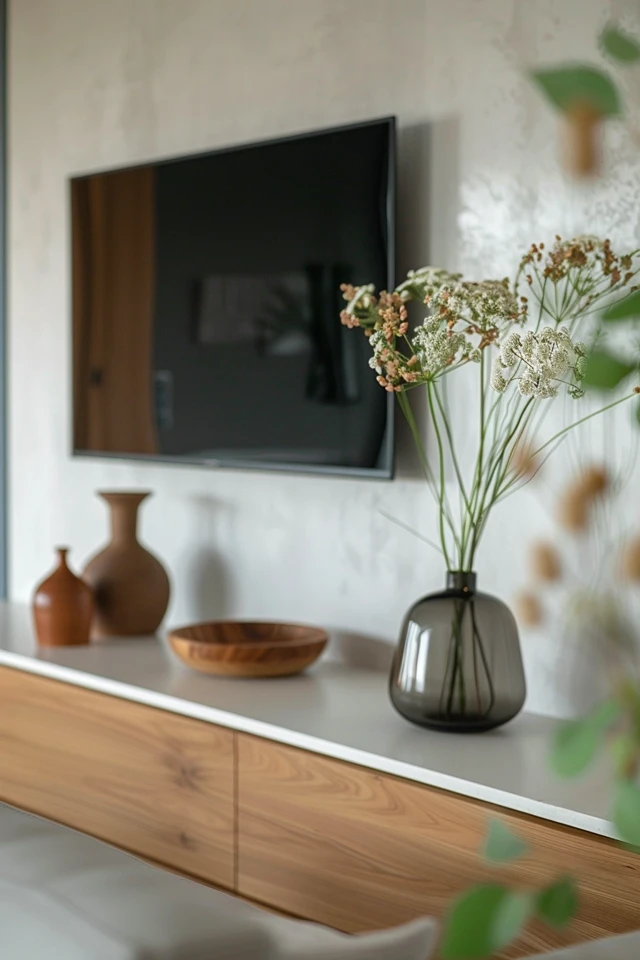Wall-mounting a TV requires secure installation to ensure stability. Professional installation is recommended for plaster, concrete walls, and above fireplaces. Retailers offer installation services, prices starting at $70 to $100. TV mounts conform to a standard VESA screw-hole pattern. Install mounting brackets on the TV to check the fit.
Measure from the bottom of the TV to the bottom of the wall plate to determine proper height. Use a stud finder to locate wall studs for the most secure attachment. Some carpenter’s tricks include measuring 16-inch increments, using magnets to find screws or nails, and locating wall trim or baseboards.
Use a template or level to mark the position for mounting holes and ensure they are centered in the studs. Drill pilot holes and use proper screws or bolts for secure attachment. Align the mounting brackets on the TV with the wall plate or arm on the wall mount and secure them with screws according to the manufacturer’s instructions. Adjust leveling screws if available.
Key Takeaways:
- Professional installation is recommended for plaster, concrete walls, and above fireplaces.
- Use a stud finder to locate wall studs for the most secure attachment.
- Measure from the bottom of the TV to the bottom of the wall plate for the proper height.
- Use a template or level to ensure mounting holes are centered in the studs.
- Drill pilot holes and use proper screws or bolts for secure attachment.
When it comes to mounting a TV on the wall, finding the right studs is crucial for a secure installation. By following the steps outlined here, you can ensure that your TV mount is properly attached to the wall studs, providing stability and peace of mind.

How To Use a Stud Finder for Metal Studs
Understanding the differences between metal and wood studs is essential. Metal studs are thinner, lighter, and spaced further apart. When it comes to finding metal studs, using the right tools and techniques is crucial for accurate detection.
One of the most effective tools for finding metal studs is a stud finder. Look for a stud finder that offers a metal scanning mode or a deep scanning mode specifically designed for detecting metal studs. These modes enhance the accuracy of the stud finder when searching for metal studs.
If you’re unsure about the presence of metal studs, consider using a magnetic stud finder. This type of stud finder detects metal screws or nails that are used to attach metal studs to the wall. By scanning the wall, the magnetic stud finder will detect these metal fasteners, indicating the presence of metal studs nearby.
Before you begin using the stud finder, it’s important to prepare the area by clearing furniture and other obstructions. Additionally, to maximize the accuracy of the stud finder, it’s recommended to calibrate it against a known metal surface, such as a metal stud or a piece of metal furniture.
Once you’re ready, slowly scan the wall with the stud finder, making sure to move in a horizontal or vertical direction. As the stud finder detects a metal stud, mark its location using a pencil or small piece of tape.
After scanning the entire wall, take a moment to verify the location of the metal studs. You can do this by using alternative methods, such as tapping the wall and listening for a hollow sound or checking for any visible signs of fasteners.
Remember, accurate detection of metal studs is crucial before drilling or hanging heavy items on the wall. By using a stud finder specifically designed for metal studs and following these techniques, you’ll ensure a secure and successful installation.
Note: The image above illustrates the process of finding metal studs using a stud finder.

Mounting a TV on the Wall: Step-by-Step Guide
When it comes to wall-mounting your TV, following the right steps is crucial for a secure installation. In this step-by-step guide, I’ll walk you through the process of mounting your TV on the wall, ensuring a hassle-free experience.
The first step is to choose the right TV mount based on your needs. Consider whether you want a fixed mount, a swivel mount, a tilting mount, or a full-motion mount. Think about the location and height of your TV, making sure it’s easily accessible to power outlets, cable input sources, and other components.
Next, identify a weight-bearing wall and decide on the optimal viewing height for your TV. To ensure a sturdy attachment, use a stud finder to locate the studs in the wall. Mark the pilot holes and position the wall mount, making sure it’s level. Then, attach the mount to the wall using screws, being thorough in your level-checking.
Once the wall mount is securely in place, it’s time to attach the mounting plate to the TV. Follow the instructions provided by the manufacturer to ensure proper attachment. With the mounting plate attached, carefully mount the TV to the wall, ensuring a secure connection between the wall plate and the TV plate. Lastly, if necessary, conceal any visible cables with a cord cover.
Remember, every TV may have specific instructions for mounting, so be sure to consult the manufacturer’s guidelines for your specific model. By following this step-by-step guide, you’ll be able to securely mount your TV on the wall and enjoy a seamless viewing experience.

Source Links
- https://www.consumerreports.org/electronics-computers/tv-mounts/how-to-wall-mount-your-tv-a3366836115/
- https://mrgrabbar.com/blogs/grab-bar-installation-tips-and-tricks/how-to-use-a-stud-finder-on-metal-studs-a-step-by-step-guide
- https://www.homedepot.com/c/ah/how-to-mount-a-flat-screen-tv-on-a-wall/9ba683603be9fa5395fab902b628783

